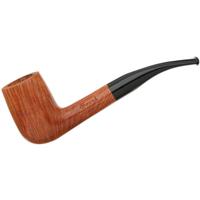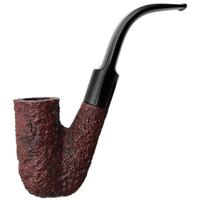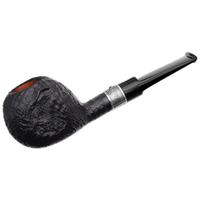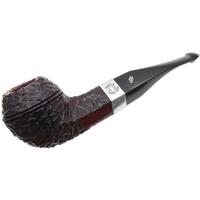What's Going On Here? (hint: it's NOT snowing)
- Thread starter georged
- Start date
You are using an out of date browser. It may not display this or other websites correctly.
You should upgrade or use an alternative browser.
You should upgrade or use an alternative browser.
- Status
- Not open for further replies.
Well, that's obviously what it looked like, in fact it is the first thing that came to mind, but I assumed that wasn't it because it was way too obvious and VERY COMMON. You said this was "extremely rare" in the U.S. This happens ALL THE TIME. Ask anyone who lives in a winter climate. It happens here on a weekly basis during the winter. In Prudhoe Bay it results in what we call "snow drifts" that are often feet deep and can bury buildings. I've never heard it called a "ground blizzard" though. We just call it blown snow, or snow drifts.What you're seeing there is called a "ground blizzard"
Damnit, George. I was waiting to hear what this amazing anomaly was
That's what we call it in Kentucky too. Man that stuff stings if you have any exposed skin.We just call it blown snow, or snow drifts.
There's a matter of degree involved.Well, that's obviously what it looked like, in fact it is the first thing that came to mind, but I assumed that wasn't it because it was way too obvious and VERY COMMON. You said this was "extremely rare" in the U.S. This happens ALL THE TIME. Ask anyone who lives in a winter climate. It happens here on a weekly basis during the winter. In Prudhoe Bay it results in what we call "snow drifts" that are often feet deep and can bury buildings. I've never heard it called a "ground blizzard" though. We just call it blown snow, or snow drifts.
Damnit, George. I was waiting to hear what this amazing anomaly was
Anywhere that experiences 90 mph winds ALL THE TIME (your caps, not mine) would make the news, I assure you. That's the low end of both the hurricane and tornado scales. Normal life of would be impossible. Humans in winter clothing would be blown down the street like leaves. (Aerodynamic drag does not increase linearly relative to wind speed. It is an exponential function.)
About five minutes after that sequence was taken I watched an 18-wheeler get overturned, and another one go off the road and into a shallow canyon while attempting to avoid tipping over.
Yeah, we're talking about two functionally different things. "White outs" involving dry snow can be caused by wind speeds considerably less than half the speed of what's happening in the pics.
Yep it happens here in Minnesota to varying degrees. This winter we had a ground blizzard that created drifts that filled in an overpass on the interstate......22 foot high drift. This was a bad year for snow and drifting in our area. Driving down my township road with banks of snow on either side over 10 feet high. Felt like a mouse in a tunnel.
Well, yes, of course it doesn’t blow 70-90 all the time, but the effect it is producing in your photos does not require wind speeds that high, 30 is more than enough, and is not something “rarely seen.” Either way, it still a cool and trippy thing to see, even when its a regular occurrence. It does get annoying during my 1 hour commutes in the winter though, sometimes turns them into 2 hour commutes 
Snow drifts were my nemesis in Prudhoe Bay when I was a surveyor though. Digging up control points under 6 feet of drift at -50 with 60mph winds SUCKS ASS.
Snow drifts were my nemesis in Prudhoe Bay when I was a surveyor though. Digging up control points under 6 feet of drift at -50 with 60mph winds SUCKS ASS.
I used to live in Wyoming and had I signed on earlier I would have known exactly what that was. Ground blizzards are actually quite common in places where the bloody wind blows constantly, like EVERYWHERE in Wyoming. Seriously, it is windy there. A lot. Not all the time, there was this afternoon back in 1983 when it didn't blow. Much.
It's a matter of dry as dust snow getting blown from one place to another at velocity. It can be pretty nasty driving too, since you can't see a blasted thing, and often the wind causes the roads to be icy as hell right where the snow blows over it, and then suddenly, BANG! It's completely dry again - just about the time the high wind and slick roads caused your car or truck to begin sliding sideways. Fantastic. At least you can't see what your about to crash into. Upside down and sideways. With any luck at all the semi truck going 85 mph right behind you will squash you like a bug. :roll:
Yup. Don't miss that. At all.
It's also pretty common around the Casper to Cheyenne stretch of I-25 and makes driving that stretch of road an absolute joy.
It's a matter of dry as dust snow getting blown from one place to another at velocity. It can be pretty nasty driving too, since you can't see a blasted thing, and often the wind causes the roads to be icy as hell right where the snow blows over it, and then suddenly, BANG! It's completely dry again - just about the time the high wind and slick roads caused your car or truck to begin sliding sideways. Fantastic. At least you can't see what your about to crash into. Upside down and sideways. With any luck at all the semi truck going 85 mph right behind you will squash you like a bug. :roll:
Yup. Don't miss that. At all.
It's also pretty common around the Casper to Cheyenne stretch of I-25 and makes driving that stretch of road an absolute joy.
- Status
- Not open for further replies.













